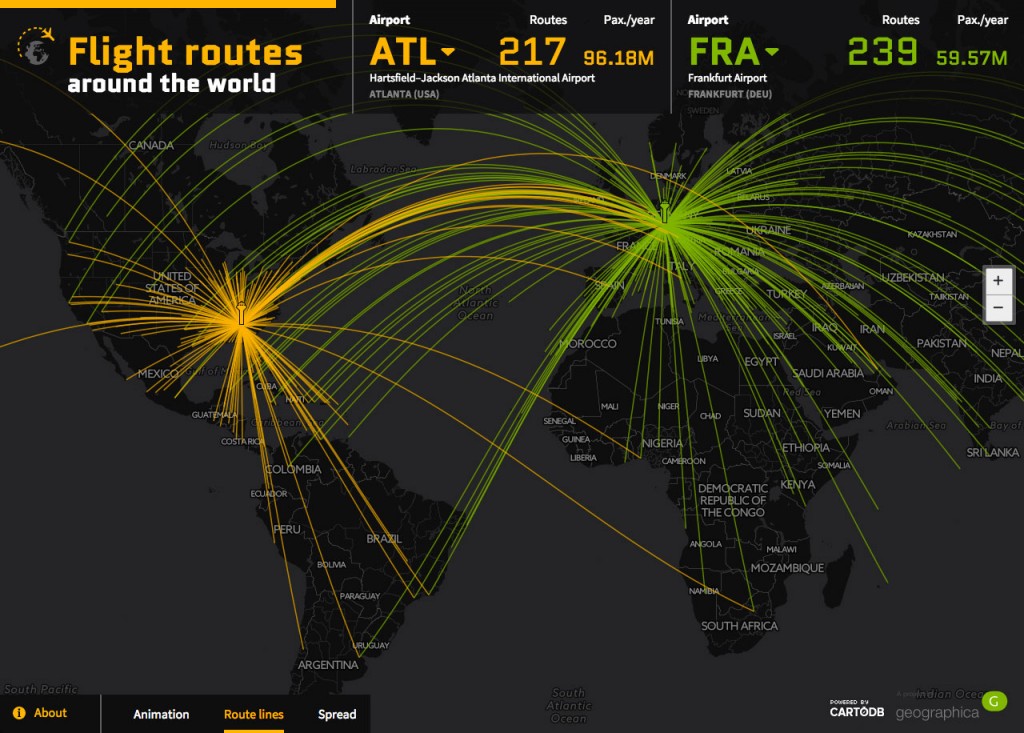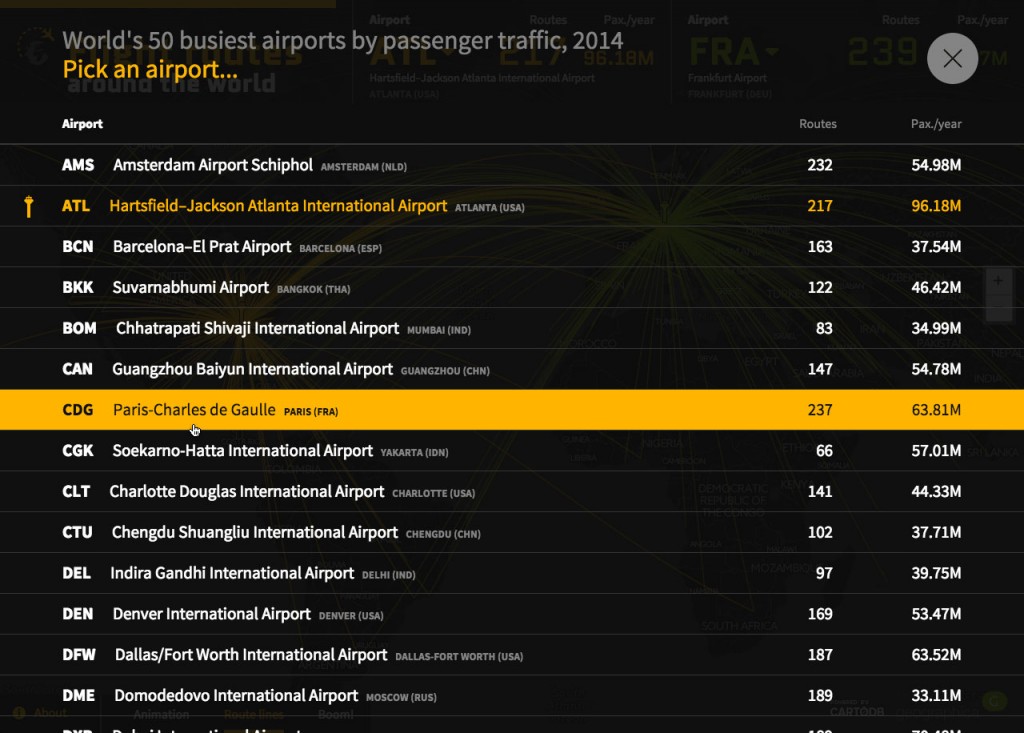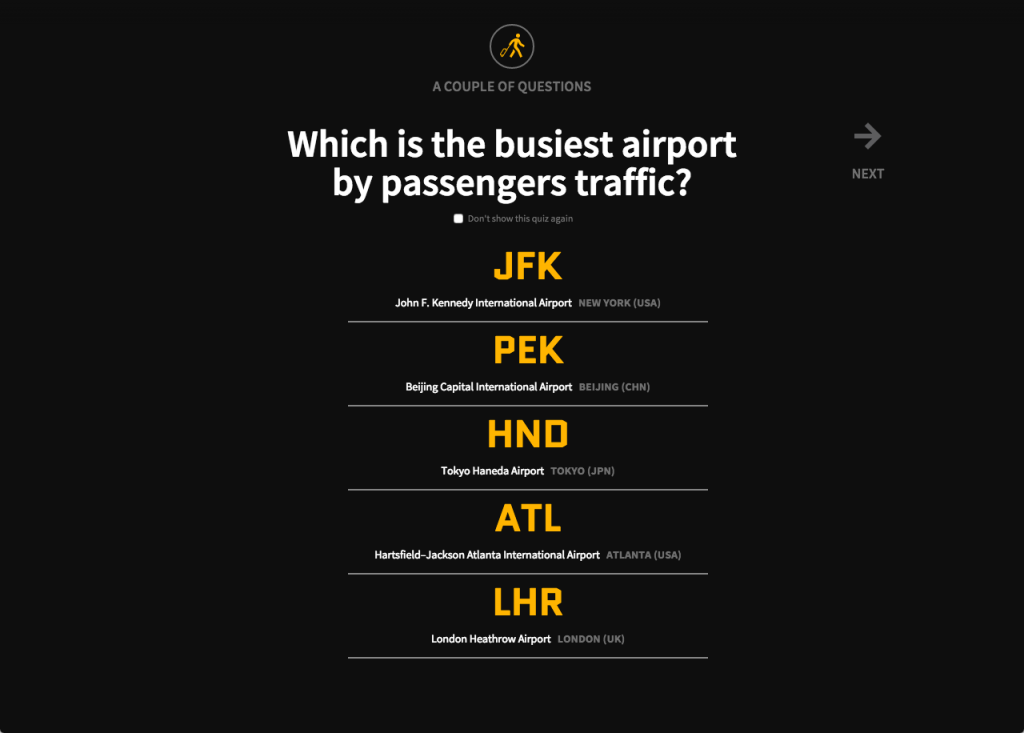From ancient Greece, the human being seeks to control the sky. Two prisoners, Icarus and Daedalus, in the Minos Island, built wings with feathers and beeswax to escape his prison.
This myth talks about the desire we all share: to fly, to conquer and use all that great empty space. And we succeeded. We’re up in a thousand ways, we fly and we want to keep flying. It shortens distances, connect us, it allows us to trade, meet, see.
Thanks to the dynamism of Carto’s technology and Geographica’s design. In a simple map we show the 50 busiest airports in the world. We can know the number of passengers passing through them. From the nearly 100 million passengers in Atlanta Airport to 239 daily flights from Frankfurt passing through 86 million passenger in Beijing or 73 million in London. Everything is spectacular.

insights
At Geographica we love this kind of works: answering questions after analyzing a bunch of data, so let me share with you the insights extracted from this map.
Geostrategic balances are changing around the world; the most important of them is perhaps the change of equilibrium between the Atlantic and Pacific axis. New conflicts, like the Ucranian one or the war on ISIS are rendering old flight routes unflyable and forcing airlines strategists to change traditional and established routes and hubs for new ones. All this has an impact on the global network of air traffic.
- New transiberian routes from North Eurasia to the Far East are developing heavily: this explains the incredible rise of Moscow’s Domodedovo International Airport as a new hub.
- Likewise, new north equatorial routes are being established: the transit from Europe to the Far East takes it route south making the Dubai International Airport the most important hub of the arabic nations.
- Pacific transit is on the rise: japanese, chinese, and US west coast airports remain among the most active in the world, but also Licenciado Benito Juarez International Airport in Mexico and Sao Paulo’s Guarulhos International Airport increased connections with the Far East honor the Pacific Axis increasing importance as a rising international scenario with respect to the Atlantic one.
- Europe is lagging behind: in addition to the US, Europe was the heart of the global air traffic network, being France and England powerfull hubs of transport for their former colonial territories. This importance has begun to dematerialize somehow, resulting in a more interconnected network (like in the case of Africa) not necessarily dependant from european or north american hubs. Paris Charles de Gaulle has fallen in importance, while London’s Heathrow and Gatwick still retaining its crown among the most important hubs in the world. However, it is Frankfurt am Main International Airport the one that has become the true european hub. Madrid’s Adolfo Suárez has also seen an uprising thanks to its specialization in routes to Latin America.
- Africa is still lacking interconnections: although the net grow of internal african flights is sustained, and that the interconnectivity among african hubs has increased (no more so many trips to France to go back to a neighbouring country), Africa is still the continent with the least interconnectivity rate in the world.


You can check it out at http://flightroutes.geographica.gs





